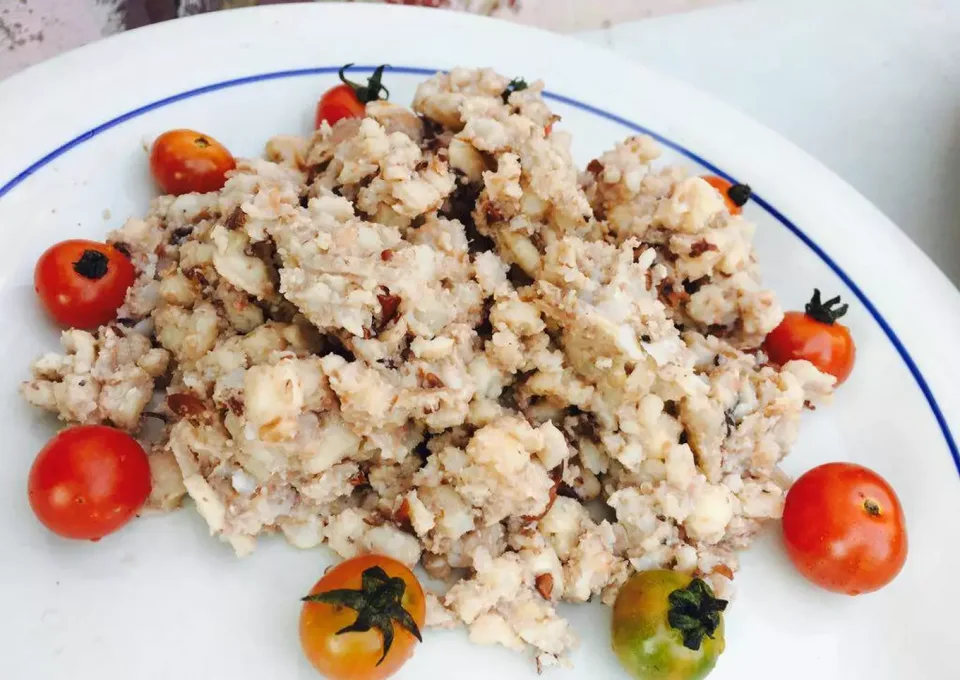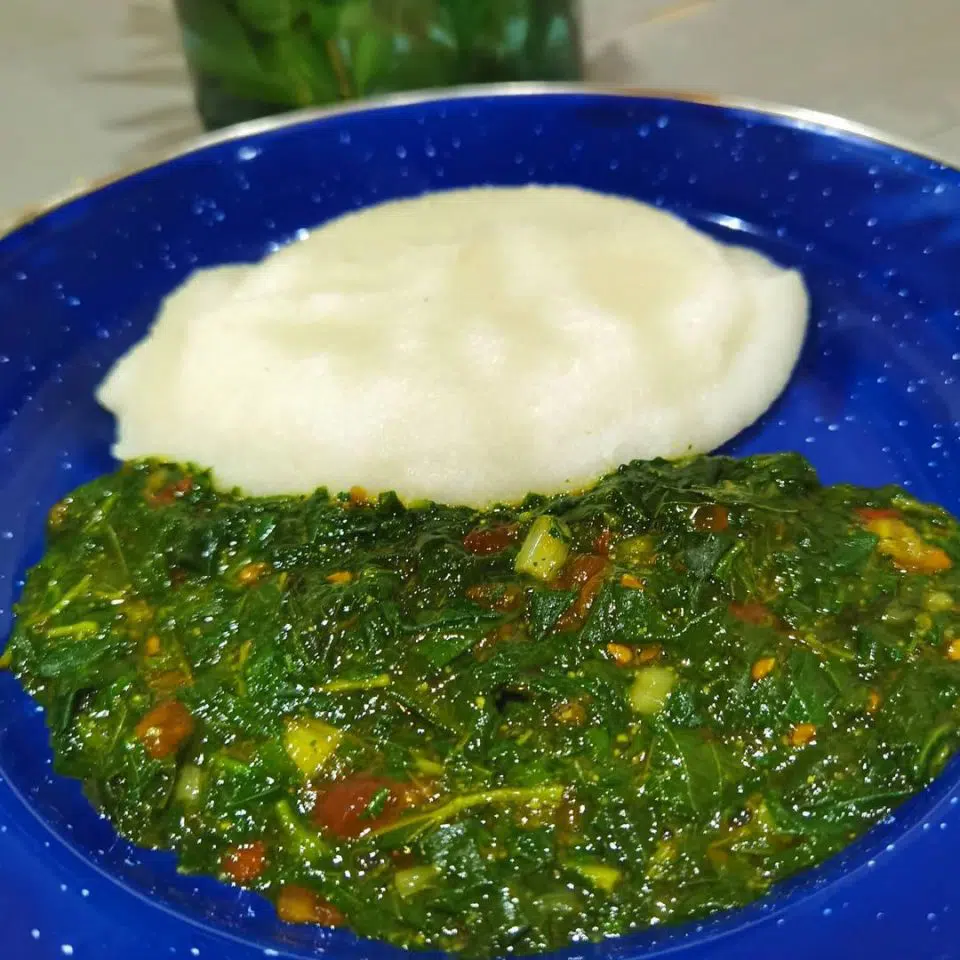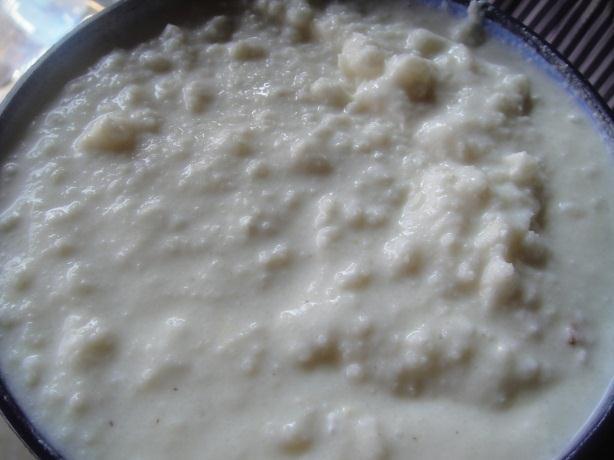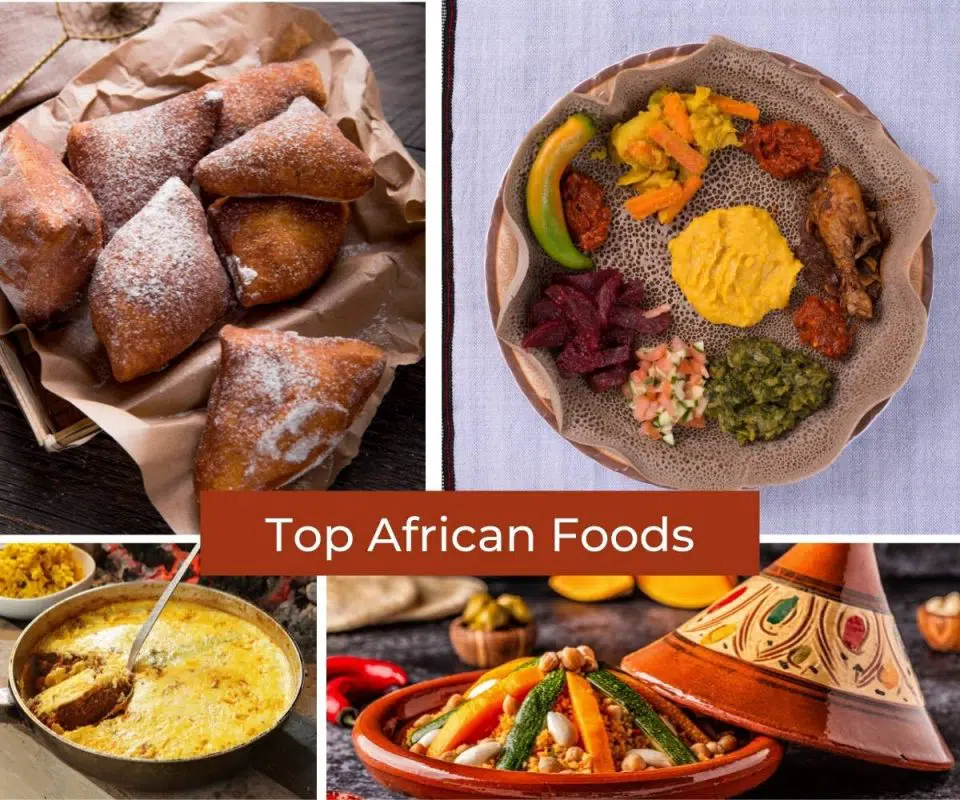The Kingdom of eSwatini, more commonly written Eswatini, is the last absolute monarchy in Africa. It is a country many have never heard of, but once visited, never forgotten!
Known as Swaziland, until the King declared an official name change in 2018, this small landlocked country, found within the geographic area of South Africa and bordering Mozambique, has many spectacular mountain landscapes and is full of thriving culture and tradition.
With a population of a little over 1 million people, mostly living outside of urban centers, the kudla, pronounced “goood-dla” (food) most commonly consumed is that found in the surrounding area. However, this doesn’t mean a boring menu!
Instead, Swazis are very creative in their use of resources, with every part of the plant or animal being used. A wide variety of foods and preparation methods are incorporated into Swazi cuisine, creating a vast array of delicious culinary combinations.
The Swati, or siSwati, language has some unusual sounds. Here are two pronunciations you can practice.
- The letter ‘c’ is a click, like the ‘tsk’ sound you make when you are disappointed or frustrated about something! For example, ncesi is pronounced n+click+esi, which means ‘Sorry’!
- ‘K’s are pronounced like ‘g’s, unless it’s ‘kh’, then it’s pronounced like a ‘k’! For example, kudla (food) is pronounced goood-dla, while umkhaba is pronounced um-khah-bah, and means a pot belly!]
In urban centers, you will find several fast-food and family restaurant chains, many of which are South African, and even some independent restaurants serving international cuisine, although these are limited. Even with this outside influence, the most popular food and drink is still largely based on traditional foods.
EmaSwati (Swazi people) are proud of their culture, and love to share their traditions and food with others. Here are 20 of eSwatini’s most popular and delicious foods!
1. Umncushu (Porridge)

Umncushu is a classic Swazi dish. The main ingredient is samp, which is dehulled maize kernels pounded until broken. The beans most often used are sugar or jugo beans, but any other dried bean can be used.
The samp and beans are boiled until soft, then mashed together and mixed with ground peanuts. Think of very thick mashed potatoes with bits of corn and beans mixed in and you have umncushu. Other vegetables, herbs, and spices can also be added for extra flavor.
And the crusty bottom stuck to the pot, called skhokho, is the best part! Umncushu can be served plain, or with sides like gravy, and meat stews.
2. Buganu (Marula Fruit Drink)

This beverage is such a favorite that it has its own annual festival. It is an alcoholic brew made from the juice and pulp of the marula fruit and is very potent! Ripe marula fruit are peeled, mixed with water, and left to ferment at room temperature for about three days.
Sugar is normally added to quicken the fermentation process. The liquid is strained to remove the seeds and impurities and then it is ready to be served. It is very easy to make, and many different kinds of fruit can be used, so it is a common village industry for many gogos (grandmothers/old ladies).
3. Kwangekhatsi (Tripe)

Kwangekhatsi means ‘insides’ in siSwati, and is any edible stomach lining of farm animals including cows, sheep, goats and pigs, the most common being beef. There are four different varieties of beef tripe, one from each of the cow’s four stomach chambers.
The different tripes are boiled together with the intestines for several hours until very tender. Other vegetables and herbs can also be added. In eSwatini, kwangekhatsi is served as a starter or main meal, plain or with some kind of starch, often pap (See #6), and is touted as a great hangover remedy, perfect after a night on buganu!
4. Ligusha (Jute Soup)

Ligusha is a vegetable very rich in fiber, protein, and vitamin C. The young leaves or new shoots are picked and boiled on a low heat. The leaves are mashed while cooking, giving it a thick and somewhat slimy consistency, which some people can’t stomach, but this is the rich soluble fiber that makes it so nutritious and a favorite of EmaSwatis.
Other vegetables, such as onion, tomato, okra, and melon seeds can be added to give more flavor. The dish is normally served with starchy staples such as pap or rice.
5. Inkaka (Bitter Gourd)

Inkaka is a dish commonly eaten by the elderly but is not a favorite of youth because of its bitter taste. Nevertheless, inkaka is well known for its health benefits and is a source of over a dozen vitamins and minerals.
Both the leaves and the fruit are edible and can be served as a tea or a soup. As a soup, the leaves are cooked until tender, then peanuts and other vegetables are added for flavor.
6. Lipalishi (Maize Porridge)

Lipalishi is a staple food among EmaSwatis, although it is more commonly called pap, which comes from the Afrikaans word mealiepap. Maize is dried then dehulled and ground into a flour called mealie meal. Mealie meal is added to boiling water and cooked for 10-15 minutes to make a porridge.
It is pretty bland on its own and is usually served with other dishes and flavorings. It is made in several ways depending on how you are serving it or what you are serving it with, the main difference being the consistency.
Firm pap, the main way of preparing it, is very thick and can be picked up in the hand. It is usually served with stews, gravy, and sauces.
Liphutfu/Phuthu has a dry, crumbly texture. It is most commonly served with gravy, curries, and dairy products such as emasi (sour milk) or regular milk.
Soft porridge, is thinner, with a runnier consistency and is commonly served as breakfast with added sugar and butter.
Pap can also be prepared as a sour porridge by mixing mealie with water and fermenting it for two to three days. It is then cooked as usual but has a more sour taste.
Whatever your mood, there is a maize meal to suit!
7. Chicken Dust (Barbeque chicken)

Chicken dust is not a native Swazi dish but has grown in popularity over the years for its price, convenience, and taste. Chicken dust is simply flame grilled chicken served with pap and salad. There is no uniform recipe for chicken dust, as it differs from place to place. But in almost every eSwatini town, you are likely to see someone roasting chicken on the roadside.
And that is how this dish got its name: from people selling chicken on dusty roads. With busy city life and little time to prepare home-cooked meals, chicken dust has become a tasty, inexpensive treat for the working class. You can get a quarter chicken, pap, and salad for less than USD$2!
8. Sinkhwa Sembila (Mealie/Corn Bread)

Mealie bread is an original Swazi dish and is often sold on the roadside by women or children, with the loaves delicately wrapped in the corn cob leaves. Traditionally, mealie bread is steamed rather than baked, a gentler, slower cooking process that creates a very soft consistency.
The resulting bread is very moist, like a cross between thick, corn pudding and a very dense bread. Nowadays, the bread is mostly baked and has a crispy crust and is crumblier in texture. Ingredients include sweet corn kernels, milk, eggs, butter, flour, sugar, and salt. The bread can be served plain or with emasi, gravy, or any curry.
9. Inyama Lebilisiwe (Boiled Meat)
While boiled meat may not sound very appetizing to Western tastes, it is one of the most common ways of preparing meat in eSwatini, and provides a flavorful, tender meat that falls off the bone.
Any type of meat can be prepared this way, but the most common are beef, homestead chicken (tinkhukhu emakhaya), a kind of free-range chicken with tougher meat and a gamey flavor, goat and game such as impala or warthog. Only salt and vegetables are added, and the flavor of the meat really comes through. It can be served as a main dish or added to soups or stews, together with a starch and vegetables.
10. Bhatata (Sweet Potatoes)

Sweet potato is one of the most commonly consumed vegetables in eSwatini. It is most popular with people in rural areas, where they are often served with tea for breakfast.
While new varieties of sweet potato are being introduced, such as the orange-fleshed sweet potato, the typical sweet potato has a purple skin, white flesh, and a very starchy consistency. The potatoes can be baked, fried, mashed, or served as chips.
11. Umbhila Wekosa (Roasted Maize) and Umbhile Lophekiwe (Boiled Maize)

Who doesn’t love a good corn on the cob? Along many roadsides and on street corners in eSwatini, you often find vendors tending their fires and roasting mealies (maize on the cob). They can also be found in markets or on busy street corners selling mealies that have been steamed in their husks until soft and creamy.
This is a popular snack or lunch for people on the go and only costs around USD 50 cents!
This is also a popular snack in Zimbabwe.
12. Imbasha (Roast Mealie with Peanuts)

This is by far the most common snack in the country. Semi-dry maize kernels are roasted in a pan and once they turn golden brown, peanuts and salt water are added. After roasting a little longer, they become a delicious, healthy snack, best served warm!
13. Umbhidvo Wetintsanga (Pumpkin Stalks and Leaves)

While pumpkins are eaten in a variety of ways, the leaves are the most sought after part. They taste like a fresh, crunchy cross between asparagus, broccoli, and spinach. When they are very young and tender, tiny pumpkin leaves are eaten fresh in salads.
Once the leaves are more mature, the leaves and stalks are carefully washed, making sure to remove the tiny spikes and hair, and cooked and mashed until soft. Ground peanuts and other vegetables can be added, resulting in a delicious creamy dish that can be served as a main or a side.
14. Mabhontjisi (Bean Stew)

Numerous beans are cultivated in eSwatini, but the most common by far are sugar beans, cowpeas, and jugo beans. The beans are boiled until soft and then stewed or made into a curry with different vegetables, herbs, and spices. A favorite bean dish is bean stew with beef bones or tripe.
15. Fat Cakes (Vetkoeks)

These deep fried dough balls are a very popular treat in many African countries. Their name, fat cakes, suggests how they are cooked or what they will do to you if you have too many!
Fat cake comes from the Afrikaans word vetkoeks, and they are basically a lazy doughnut. Crispy on the outside and soft and chewy in the middle, without the hole, they are a common breakfast or snack. They can be eaten on their own or served with stews and curries.
16. Umcwembe (Grilled Meat Platter)

Traditionally, Swazis have a communal culture and eat together, sharing meals from a big oval wooden platter called an umcwembe (oom-click-wembey). The meal begins with someone bringing round a jug of water and basin, so everyone can wash their hands before digging in.
Umcwembe is a platter loaded with flame grilled chicken, beef, pork, and sausage served with pap and a variety of salads. The grilled meat is called shisa nyama (grilled meat), and no trip to eSwatini is complete without partaking in this meal, sharing the umcwembe with friends, accompanied by a cold Sibebe, the local beer. Umcwembe is very popular and can be found equally in upmarket restaurants as well as roadside stalls.
You can find shisa nyama everywhere, in bars, diners, butcheries, restaurants, and even car washes and bottle stores, anywhere where people gather because it is a social dish and best enjoyed with family and friends.
17. Emasi (Sour milk)

Emasi is a delicacy. It is a fermented milk dish prepared by leaving raw milk at room temperature in a clay pot. How long you leave it to ferment depends on how sour you want it. Some whey is removed to make emasi, and more whey is removed to make the thicker version, ingula.
It is one of the most commonly consumed foods in eSwatini, since most homes rear cattle or goats for their milk. Emasi can be served with liphutfu (crumbly pap), corn bread, tinkhobe (ground mealies mixed with sour milk), emabele (ground sorghum), bread or drunk plain. If you like yogurt or sour cream, you will love emasi!
18. Sidvudvu (Pumpkin Pap)

Sidvudvu is simply pap mixed with pumpkin mash, giving more flavor and some sweetness to the porridge. Sidvudvu can be served on ıts own or as a side dish.
19. Emahewu (Maize Drink)

Emahewu is a non-alcoholic drink prepared by fermenting soft porridge. Maize meal is mixed with water and cooked until it softens. The porridge is left to cool, mixed with more water, then left to ferment at room temperature.
Sugar or a peeled potato is added to speed the fermentation process. Nowadays, commercial emahewu is packaged in cartons and found in different flavors such as banana and strawberry. It is often served at traditional ceremonies and gatherings and is enjoyed by all members of the family.
20. Umcombotsi (Maize Brew)

Alcohol is called tjwala in siSwati. Umcombotsi is a tjwala and is one of the most popular alcoholic beverages, especially in rural areas. It is prepared by mixing maize meal, unmilled sorghum malt (magayiwe), brown sugar, and water.
The mixture is cooked to gelatinize the starch, and left to ferment for four to five days. More water is added, then the solution is filtered to remove the malt and other impurities. This home brew is sour in taste and smell, opaque and light tan in color, and has a thick, creamy, gritty consistency. It has a low alcohol content, so people often enjoy it all day and all night long!
If you get the chance to visit eSwatini, make sure you try at least some of these dishes, but there are many more traditional foods you can sample. Look out for eDladleni Restaurant, which specializes in traditional Swazi food and drink and is owned by one of eSwatini’s most revered chefs. Just say ngilambile (nyi-lam-bee-ley) to your friend or guide and they will take you somewhere to eat, as you just told them you are hungry!
Related: 13 Eswatini Restaurants That You Should Visit

Related: 30 Famous African Foods You Need to Try

The post Top 20 Most Popular Foods in eSwatini (Swaziland) appeared first on Chef's Pencil.
from Chef's Pencil https://ift.tt/iHXsrje
via https://chefsspenncil.blogspot.com

No comments:
Post a Comment